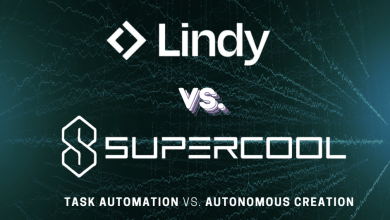
Data is the AI industry’s fuel. Yet, companies still face significant barriers in accessing structured and accurate data.Bad data leads to poor AI model performance, resulting in enormous financial loss, potential societal harm, and individual distress. Consequently, there is large demand for a human workforce that can collect and curate information.
The only way for AI to gain user trust and confidence is by leveraging good data sets to produce reliable and ethical output. Since accessing high-quality data for training AI models is resource-intensive, a decentralized, human-in-the-loop data infrastructure is critical for long-term success.
The Problem Of Bad Data In AI
For a long time, companies have suffered from high costs, poor decision-making, and unhappy customers due to a lack of credible data. According to Harvard Business Review, only 3% of companies had an ‘acceptable’ Data Quality (DQ) Score, with bad data costing firms $3 trillion annually in 2016.
AI has inherited such bad data, leading to disastrous consequences from AI-ML models’ skewed results. For example, in 2018, Amazon’s AI hiring tool was trained on biased data that discriminated against resumes mentioning women’s colleges or organizations. Eventually, it had to be scrapped due to legal and ethical concerns.
Since data is the primary ingredient in building robust AI models, analysts from major tech companies have warned against bad data quality. For instance, tech researchers from Meta Reality Labs have emphasized the need for good data to reduce LLM hallucinations and increase the factuality of LLM responses.
Similarly, Google Research analysts have flagged data quality concerns in high-stakes AI usage due to its amplified negative impact downstream. Their research demonstrated a 92% prevalence of ‘Data Cascades’, where bad data led to compounding effects in AI-ML practices.
Another developer working at OpenAI explained that tweaking model configurations and hyperparameters of different AI models has yielded similarities during their training runs. Thus, the model behavior of ‘ChatGPT’, ‘Bard’, or ‘Claude’ is not determined by their architecture, model weight, or optimizer choices but by their datasets.
Yet, achieving optimal results from AI models is difficult due to a lack of data management practices across industries, leading to suboptimal training datasets. The 2025 CDO Insights report from Amazon and Harvard Business Review shows that 52% of organizations have noted their data foundation’s readiness for gen AI implementation to be inadequate.
Most companies have a large pile of unstructured data consisting of text documents, image files, and video footage, which is difficult to harness. This unorganized data remains distributed and siloed across multiple formats, lacking neat labels and requiring context for AI training and deployment.
As the data stack is spread across warehouses and data lakes, conventional Retrieval-Augmented Generation (RAG) systems won’t work to extract value. So, until companies focus on and fix the foundational data layer, AI models will fail to deliver to their full potential.
The lack of high-quality datasets will lead to data scarcity within the AI industry, making model training even more difficult. According to researchers from Epoch and the University of Aberdeen, Tubingen, and MIT, scalable LLM training may hit a roadblock as public human-generated text data may be exhausted between 2026 and 2032.
Therefore, the AI industry must find ways to solve its bad data crisis and look for alternative sources of good data.
The Need For Better Human-Led Good Data
The right data for AI models is complete with all attributes, comprehensively represented, free of bias, clearly defined, time-sensitive, lacks duplicates, and is correctly labeled.
To begin with, curating good datasets starts from strengthening back-office data management systems with robust upstream control mechanisms. Companies like AT&T and Kuwait’s Gulf Bank have undertaken data programs in the past to build a solid data quality culture. In such systems, upstream and downstream groups work as data creators and customers, respectively, to eliminate errors within company databases.
Organizations must also convert their existing unstructured data into well-defined categories to sync with vector databases and similarity search algorithms. Rather than accessing expensive third-party proprietary data for training AI models, companies can prepare their datasets by carefully tagging and graphing content drives. Since this requires human intervention, companies are increasingly recruiting data officers within their payrolls.
The 2025 MIT Sloan AI and Data Science trends reported that 85% of organizations have appointed a Chief Data Officer, focusing on growth and transformation. With over 36% of Chief Data and AI Officers (CDAOs) reporting to CEOs and COOs, they’re crucial for delivering business value through robust data generation for in-house AI models. But companies must consider the high costs of finding and recruiting talent for senior positions that can deliver long-term value.
Consequently, some companies have turned to synthetic data for training AI models as a cost-effective solution without facing data scarcity. Unfortunately, according to researchers from the NYU Center for Data Science, “models trained on synthetic data eventually hit a performance plateau…no matter how much more data you add, the model stops improving beyond a point.”
Such a ‘model collapse’ occurs because AI-generated data lacks the diversity found in real-world data and focuses on common patterns while losing sight of ‘long tail’ information. As AI-produced content multiplies online, future AI models will be trained on web-scraped data containing large amounts of synthetic information. The Nature magazine reported it could significantly impact or halt progress within the industry.
In a subsequent paper, the NYU researchers demonstrated how reinforcement techniques using external verifiers like humans can prevent model collapse. With human-in-the-loop data curation mechanisms, it’s possible to overcome a model’s performance plateau and scale its execution with synthetic data. Thus, in a world with increasing synthetic data reserves, human intervention is critical to improve model performance levels by ranking and selecting training data.
A decentralized network of humans involved in training AI models is a cost-efficient and scalable solution to address the bad data problem. Once AI starts integrating human feedback and expertise into data curation, labelling, and training models, it’ll improve performance and generate accurate output to build user trust.
Humans maintain good data hygiene by removing duplicates, standardizing unstructured data formats, and correcting small mistakes to ensure AI models work with clean and accurate data. Simultaneously, humans can deploy cross-validation and outlier detection strategies to check data integrity for identifying and preventing the feeding of incorrect data into AI models. They are also crucial to conduct regular data audits to analyze anomalies and address quality concerns across all stages of AI model training and performance.
A decentralized workforce mitigates the challenges of traditional data collection and training for the AI industry. Such a distributed network of experts helps resolve data bottlenecks and generate high-quality training data to fine-tune AI models. This decentralized human intelligence is necessary for operational scalability through precise, diversified, and expert-driven data collection for high-performing models.
As the AI industry prepares for an accelerated growth phase, superior data quality is essential for its uninterrupted progress. A global team of human-led experts holds the key to AI’s next growth stage by actively getting involved in the ‘data stage’.



